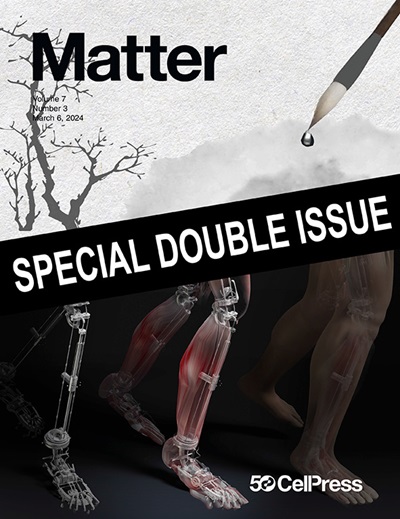Upgrading keratin into a moldable bioplastic
IF 17.3
1区 材料科学
Q1 MATERIALS SCIENCE, MULTIDISCIPLINARY
引用次数: 0
Abstract
The adoption of a circular economy model for biopolymers necessitates new technologies for valorizing keratin-rich wastes, particularly from wool. This study presents an approach to convert hard keratin proteins into flexible, moldable, and freestanding bioplastics. This method relies on reprogramming the keratin’s structure by grafting building blocks on fully unfolded keratin via the thiol-based Michael-type addition between double bonds of the building blocks and thiols of keratin. The engineered protein showed new functionalities, resulting in: thermoplastic keratin after grafting with poly(ethylene glycol) methyl ether methacrylate; and increased toughness with poly(ethylene glycol) dimethacrylate, a fully bio-based, flexible, and tough material (that outperformed every other regenerated keratin material) from epoxidized soybean oil acrylate. This efficient reaction occurs at room temperature in the same aqueous solution used for the extraction, without the need for additional steps. This approach emphasizes the potential of proteins as sustainable plastic alternatives.


求助全文
约1分钟内获得全文
求助全文
来源期刊

Matter
MATERIALS SCIENCE, MULTIDISCIPLINARY-
CiteScore
26.30
自引率
2.60%
发文量
367
期刊介绍:
Matter, a monthly journal affiliated with Cell, spans the broad field of materials science from nano to macro levels,covering fundamentals to applications. Embracing groundbreaking technologies,it includes full-length research articles,reviews, perspectives,previews, opinions, personnel stories, and general editorial content.
Matter aims to be the primary resource for researchers in academia and industry, inspiring the next generation of materials scientists.
 求助内容:
求助内容: 应助结果提醒方式:
应助结果提醒方式:


